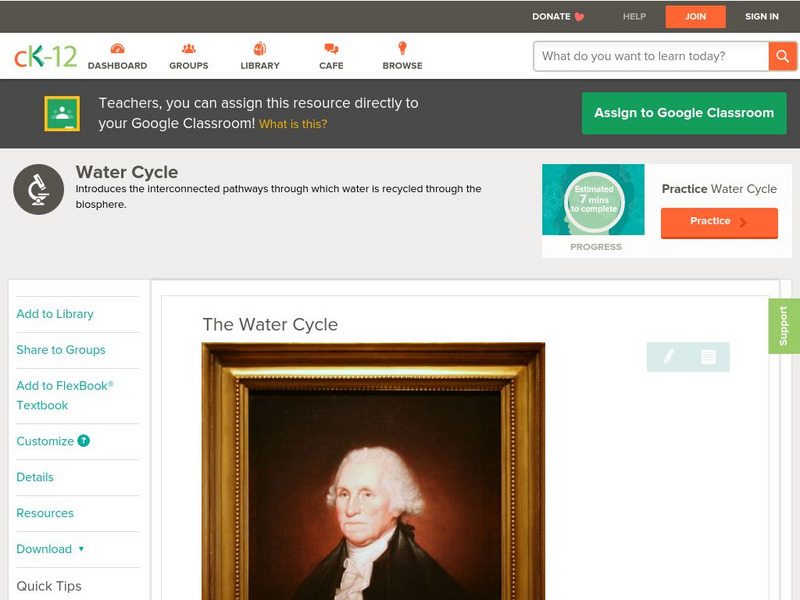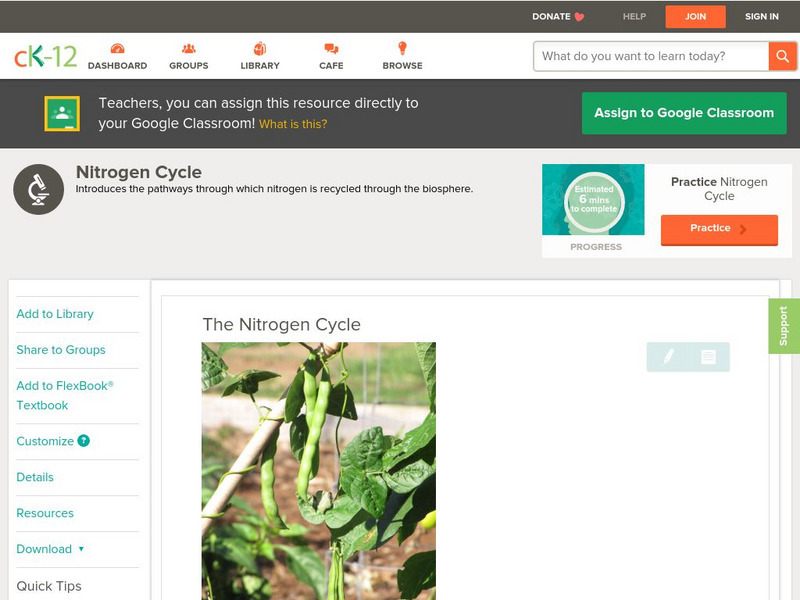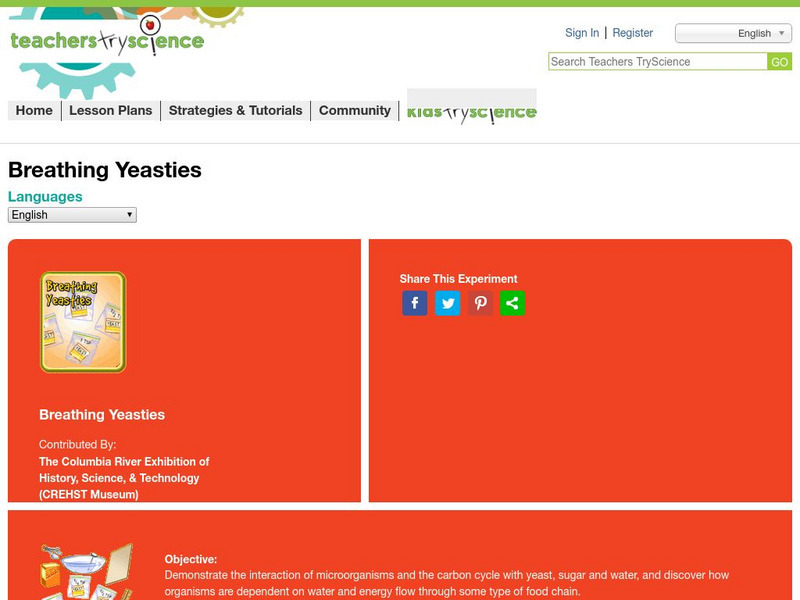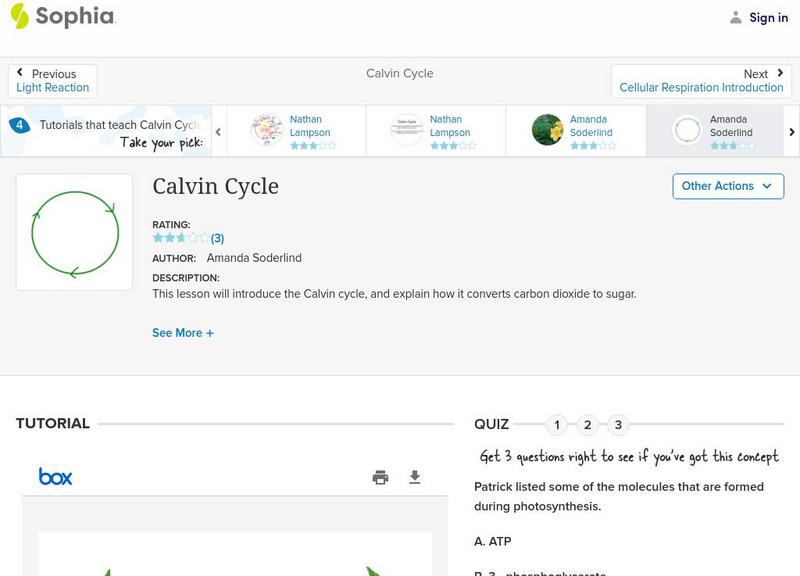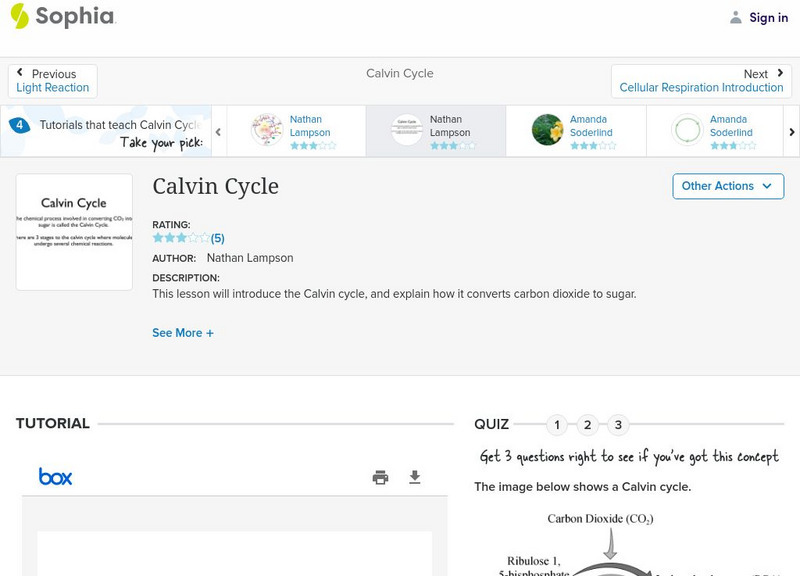Hi, what do you want to do?
Encyclopedia of Earth
Encyclopedia of Earth: Physics & Chemistry: Carbon Dioxide
Explains what carbon dioxide is, where it is found, sources of it, and describes human activities that contribute to carbon depletion and increased levels of carbon dioxide in the atmosphere. (Updated: February 22, 2013)
Center for Innovation in Engineering and Science Education, Stevens Institute of Technology
Ciese: Carbon Imbalance: Algae to the Rescue? [Pdf]
A 95-page learning module that integrates biology, chemistry, and engineering. It includes in-class labs, virtual labs, and engineering design activities. Working with algae, students learn about and investigate how photosynthesis,...
Other
The Learning Partnership: Journey to El Yunque
In this set of learning modules, students examine the impact of hurricane weather on the El Yunque rainforest in Puerto Rico. They learn about hurricanes, producers, consumers, and the food chain, and how disruptions in organisms'...
TeachEngineering
Teach Engineering: The Great Algae Race
In a multi-week experiment, student groups gather data from the photobioreactors that they build to investigate growth conditions that make algae thrive best.
CK-12 Foundation
Ck 12: Life Science: Water Cycle
[Free Registration/Login may be required to access all resource tools.] Water and elements like carbon and nitrogen are constantly being recycled through the environment. This process is called a biogeochemical cycle because it involves...
Chem4kids
Chem4 Kids: Cycles Around You
There are many cycles occurring in all of the Earth's organisms, including the Earth itself. This brief page highlights some of those cycles, making readers aware of how many cycles there are, big and small.
CK-12 Foundation
Ck 12: Life Science: Nitrogen Cycle
[Free Registration/Login may be required to access all resource tools.] Like water and carbon, nitrogen is also repeatedly recycled through the biosphere. This process is called the nitrogen cycle. Learn more about the nitrogen cycle in...
PBS
Pbs Learning Media: Cave Formation: Biogeochemical Cycles
This video segment adapted from NOVA chronicles the discoveries that led to a radical new theory in which living organisms, not just geological processes, play an active role in cave formation. [5:42]
Teachers TryScience
Teachers Try Science: Breathing Yeasties
See how combining yeast, sugar, and water can demonstrate the carbon cycle and show how microorganisms work in the food chain.
BBC
Bbc: News: Guide to Climate Change
The BBC offers an interactive guide to climate change, including a sliding scale depicting climate change from 1885 to 2099, animation which explores how the greenhouse effect works, and detailed diagrams exploring the carbon cycle, the...
NASA
Nasa: Carbon: Where Does It All Go?
At this site from NASA you can understand how phytoplankton help the carbon dioxide levels between the oceans and the air stay in balance.
University Corporation for Atmospheric Research
Ucar: Atmospheric Science Explorers: Global Climate Change
A detailed overview of global climate change, with explanations of Earth's climate change, the carbon cycle, ecosystems, and greenhouse gases, and how the movements of matter and energy impact on climate. All information is reinforced...
National Geographic
National Geographic: Sources, Sinks, and Feedbacks
Students will learn about how the Earth's carbon cycle works, as they examine the relationship between levels of carbon dioxide and water vapor in the atmosphere and the temperature of the ocean's surface. Includes online student...
Texas Education Agency
Texas Gateway: Second Law of Thermodynamics: Heat Engines and Their Efficiency
By the end of this section, you will be able to state the expressions of the second law of thermodynamics; calculate the efficiency and carbon dioxide emission of a coal-fired electricity plant, using second law characteristics; and...
Annenberg Foundation
Annenberg Learner: The Habitable Planet: Carbon Lab
An interactive lab simulation demonstrates the effects of increased carbon in the atmosphere and how that increase contributes to climate change. A data table for student records is available for download.
BiologyWise
Biology Wise: Carbon Oxygen Cycle
The fours stages of the carbon-oxygen cycle are described - photosynthesis, respiration, combustion, and decomposition.
Bio Topics
Bio Topics: Cycles in the Ecosystem
A instructional activity and notes covering cycles in the ecosystem, including the carbon and the nitrogen cycles.
Texas Education Agency
Texas Gateway: Abiotic Cycles
Given scenarios, illustrations, or descriptions, the student will describe the flow of matter through carbon and nitrogen cycles and describe the consequences of disrupting these cycles.
Khan Academy
Khan Academy: Biogeochemical Cycles Review
Review information on the cycling of matter throughout the spheres of Earth.
Sophia Learning
Sophia: Calvin Cycle: Lesson 2
This lesson will introduce the Calvin cycle, and explain how it converts carbon dioxide to sugar. It is 2 of 4 in the series titled "Calvin Cycle."
Sophia Learning
Sophia: Calvin Cycle: Lesson 3
This lesson will introduce the Calvin cycle, and explain how it converts carbon dioxide to sugar. It is 3 of 4 in the series titled "Calvin Cycle."
Sophia Learning
Sophia: Calvin Cycle: Lesson 4
This lesson will introduce the Calvin cycle, and explain how it converts carbon dioxide to sugar. It is 4 of 4 in the series titled "Calvin Cycle."
Climate Literacy
Clean: Carbon Dioxide Fertilization of Marine Microalgae Cultures
In this experiment, students investigate the importance of carbon dioxide to the reproductive growth of a marine microalga, Dunalliela sp.
Climate Literacy
Clean: Carbon Dioxide Sources and Sinks
For this lab activity, students use a chemical indicator (bromothymol blue) to detect the presence of carbon dioxide in animal and plant respiration and in the burning of fossil fuels and its absence in the products of plant...
Other popular searches
- Biology the Carbon Cycle
- Science: The Carbon Cycle
- Science the Carbon Cycle
- The Carbon Cycle Worksheet






![Ciese: Carbon Imbalance: Algae to the Rescue? [Pdf] Unit Plan Ciese: Carbon Imbalance: Algae to the Rescue? [Pdf] Unit Plan](http://lessonplanet.com/content/resources/thumbnails/455842/large/bwluav9tywdpy2symdizmdeyny0xmdcynjyylwcwy3uxni5qcgc.jpg?1674855345)


